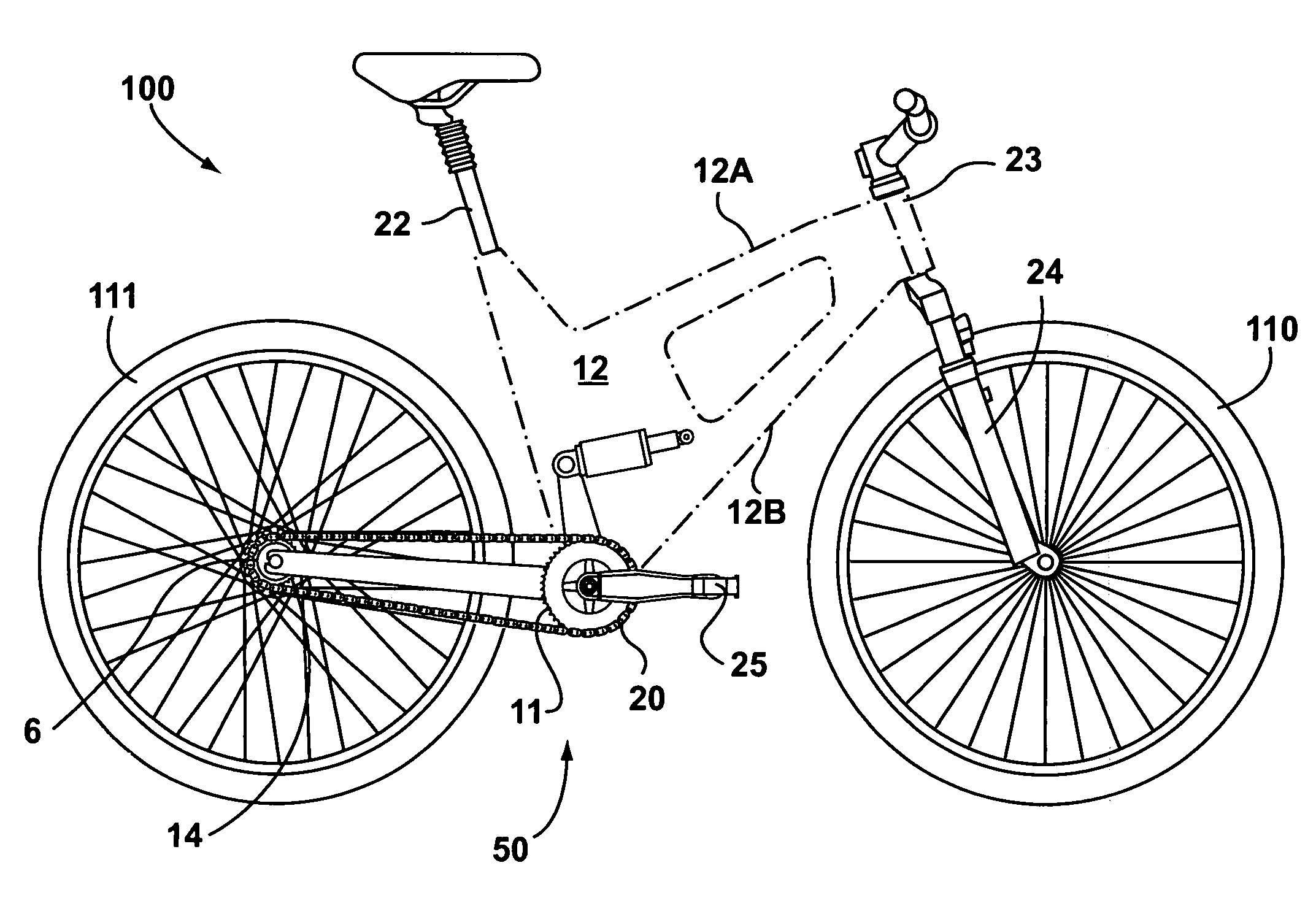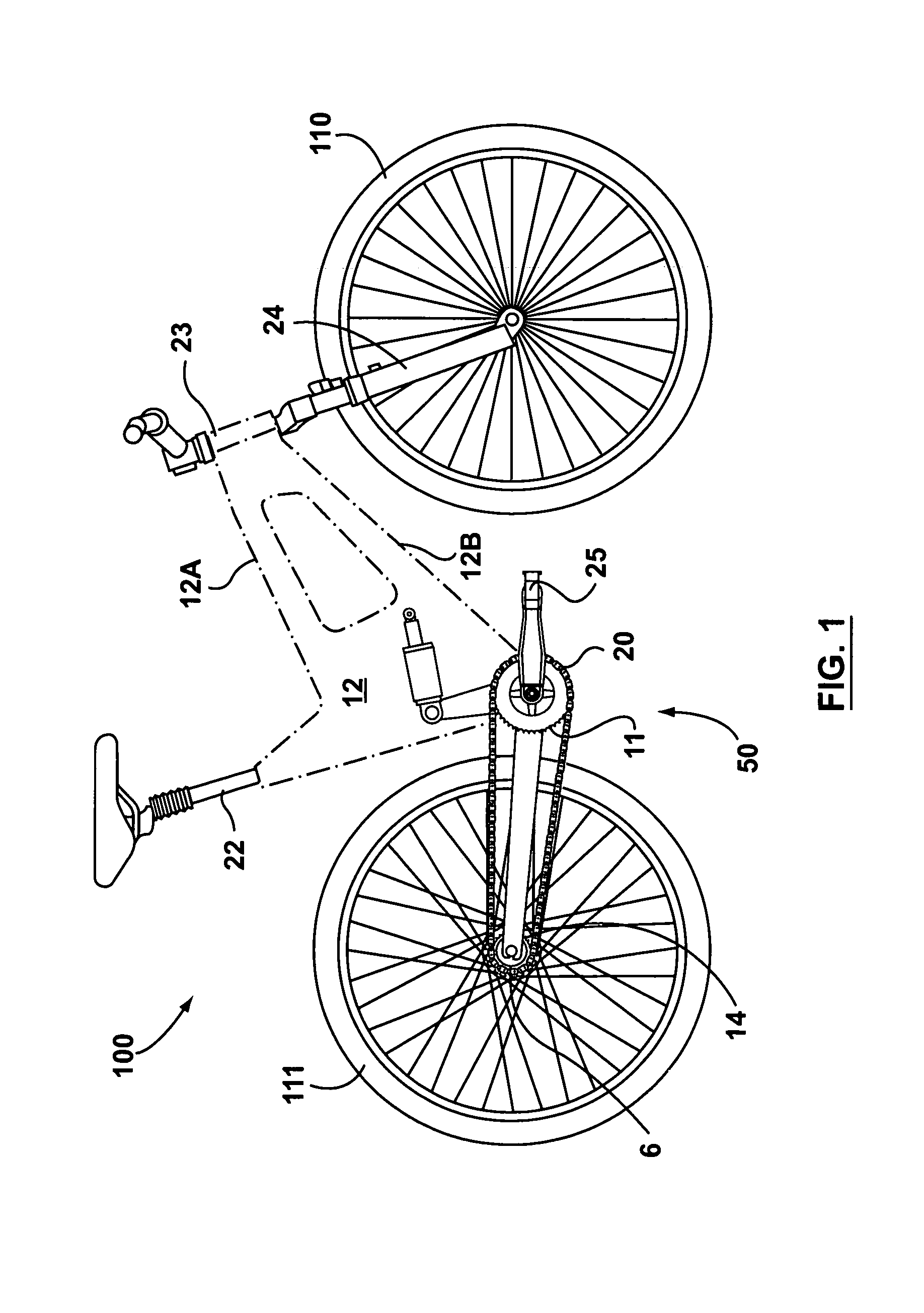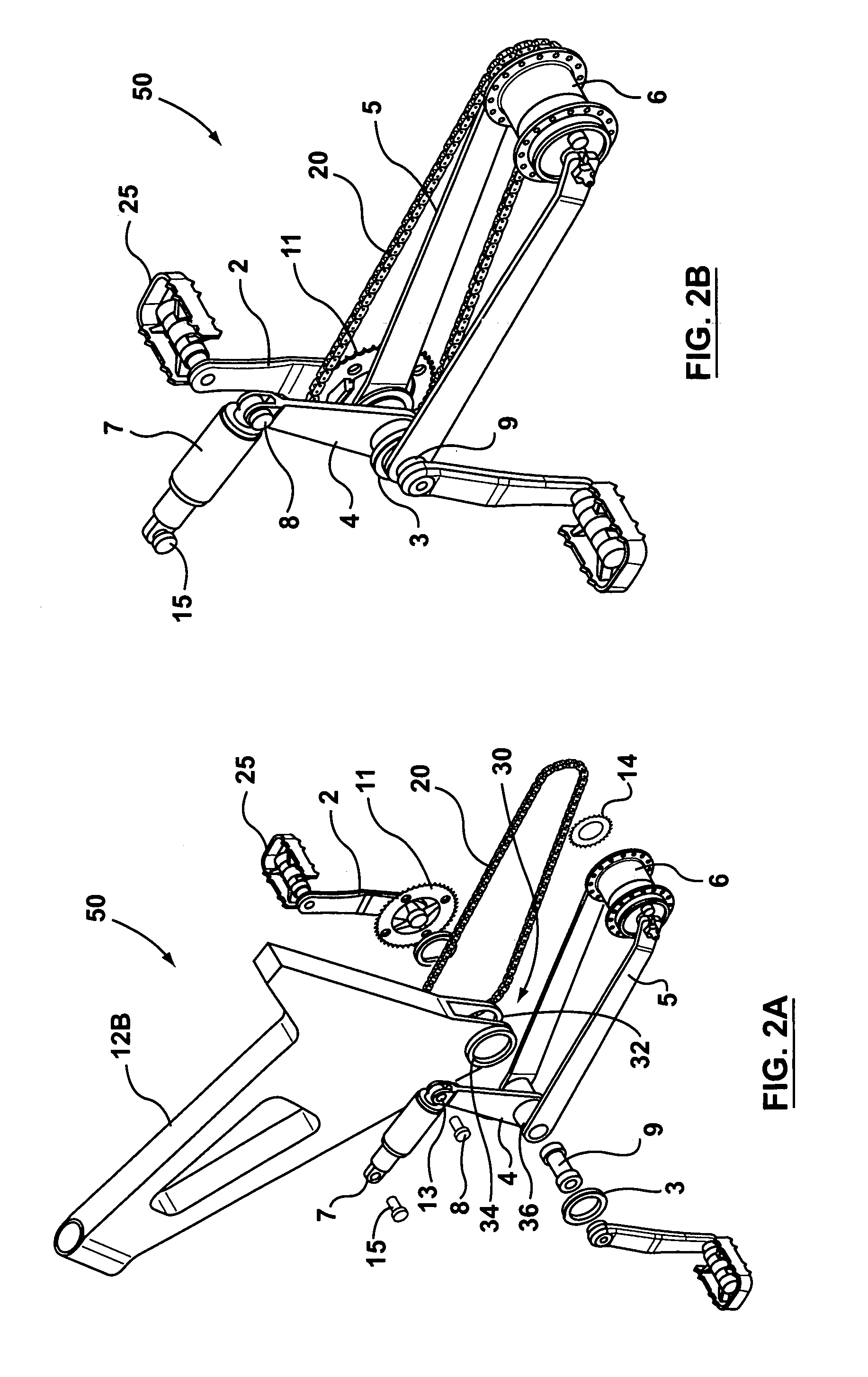Cantilever rear suspension for a bicycle
a rear suspension and bicycle technology, applied in the field of bicycles, can solve the problems of no prior art suspension system meeting all of these goals, system is heavy, complex or requires frequent maintenance, etc., and achieves the effects of reducing unwanted play, reducing biopacing or pogoing, and extending the service li
- Summary
- Abstract
- Description
- Claims
- Application Information
AI Technical Summary
Benefits of technology
Problems solved by technology
Method used
Image
Examples
Embodiment Construction
[0033]FIG. 1 shows a bicycle 100 according to an embodiment of the invention, comprising a main frame indicated in its entirety by the reference number 12. The frame 12 may have a top frame part 12A and a bottom frame part 12B. The frame 12 has two sides which include stressed walls of a monocoque or semi-monocoque shell, although other frame designs may also be used. The frame 12 supports a saddle-bearing tube or seat post 22, an attachment or head tube 23 for the handlebars and a fork 24 to which the front wheel 110 is associated in a conventional manner. The frame 12 is part of a suspension assembly 50 which supports the rear wheel 111. A transmission assembly is of the conventional chain and sprocket type, whereby rotary motion from the pedals 25, acting through crank arms 2, is transmitted to the rear wheel 111 via a chain 20 that is wrapped around a front sprocket 11 and rear sprocket 14, more clearly visible in FIGS. 2A and 2B.
[0034]The various components of the suspension as...
PUM
 Login to View More
Login to View More Abstract
Description
Claims
Application Information
 Login to View More
Login to View More - R&D
- Intellectual Property
- Life Sciences
- Materials
- Tech Scout
- Unparalleled Data Quality
- Higher Quality Content
- 60% Fewer Hallucinations
Browse by: Latest US Patents, China's latest patents, Technical Efficacy Thesaurus, Application Domain, Technology Topic, Popular Technical Reports.
© 2025 PatSnap. All rights reserved.Legal|Privacy policy|Modern Slavery Act Transparency Statement|Sitemap|About US| Contact US: help@patsnap.com



